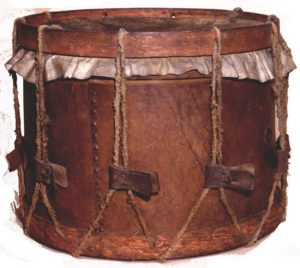
GENERAL JAMES LONGSTREET (1821-1904), 1861-1865
Original in the Library of Congress
After serving directly under Gen. Robert E. Lee at Gettysburg, Longstreet and his army traveled to Chattanooga by rail to support Bragg. Despite Longstreet’s contribution upon arrival at the Battle of Chickamauga, Bragg chose to disperse the generals who had expressed their lack of confidence in him. Longstreet had serious doubts about his orders to retake Knoxville.
“I came to the conclusion… that it was to be the fate of our army to wait until all good opportunities had passed, and then in desperation, seize upon the least favorable movement… Have you any maps you can give or lend me?” Gen. James Longstreet, letter to Gen. Simon Buckner, November 5, 1863

GENERAL BRAXTON BRAGG (1817-1876), 1861-1865
Original in the New York Public Library
General Braxton Bragg commanded the Confederate Army of Tennessee at Chattanooga. After an overwhelming victory at Chickamauga, Georgia, Bragg decided to besiege the defeated Federals, who had retreated into nearby Chattanooga, Tennessee. Bragg split his army, sending Longstreet and 17,000 troops to Knoxville, thus giving Grant the opportunity and advantage he had hoped for.

GENERAL ULYSSES S. GRANT (1822-1885), 1861-1865
Original in the Library of Congress
General Grant, recently appointed by Lincoln to replace Rosecrans as commander of U.S. troops in Chattanooga, approved of Burnside’s plan to slowly draw the Confederates toward Knoxville, preventing their speedy return to reinforce General Bragg’s army in Chattanooga.

GENERAL AMBROSE BURNSIDE (1824-1881), 1861-1865
Original in the Library of Congress
Photograph by Matthew Brady
Since his arrival in East Tennessee, Burnside had attempted to secure it for the Union by dispersing his troops to key locations. When he heard that Longstreet was marching north, he rose to the challenge by devising a workable strategy to keep the Confederates away from Chattanooga.
“…it will benefit Grant if we can draw Longstreet away from his front more than it will injure us. If General Grant can destroy Bragg, it is of no great consequence what becomes of ourselves.” Burnside to his officers, November 1863
On November 4, 1863, General Braxton Bragg, commander of Confederate forces in Chattanooga, ordered General James Longstreet to retake Knoxville. From the outset, Longstreet had serious and reasonable misgivings about the mission. He was going into unfamiliar, semi-hostile territory with a single, inaccurate map. Rail transport was extremely slow and inadequate for his 12,000 troops. They could take the train only as far as Sweetwater where promised provisions were non-existent. The major railroad bridge over the Tennessee River had been destroyed by Confederates heading south, so a pontoon bridge had to be transported and constructed.
Since arriving in September, Burnside had dispersed his troops to the key river and railroad points around Knoxville. When he heard about the approaching Confederate Army, he rode to Loudon to lead some 5,000 troops back to Knoxville. Burnside planned to lure Longstreet to Knoxville, keeping him from returning to reinforce Bragg who was laying siege to the Union army in Chattanooga, stalling as long as possible.
The weather was especially bad. Rain and unusually cold temperatures contributed to the almost impassable conditions of the roads. Wagons sank axle-deep and up to 16 animals were needed to pull one caisson. Many Union wagons with winter provisions had to be abandoned and were eagerly collected by the underfed Confederates. Both armies raced towards Knoxville, the Federals following the rail line and the Confederates following the major east-west road Kingston Pike. Those not-quite parallel routes intersected at present-day Farragut, 16 miles west of Knoxville.
The Battle of Campbell’s Station on November 16 was an artillery duel between 5,000 Federals and 12,000 Confederates. By holding back Longstreet’s troops, Burnside maintained control of the one vital road; his soldiers and wagons safely maneuvered down Kingston Pike into the as yet barely defended town of Knoxville.
Up Next: Engineering a Victory

CARTRIDGE BOX
1860-1865
Leather, wood
Gift of the heirs of Frank H. Taylor and Mrs. W. W. Harrell, 1951
Ambrose Burnside designed and manufactured the Burnside carbine. Union cavalrymen ordered some 55,000 of them; many were captured and used by Confederates. The Burnside carbine was the third most popular carbine, after the Sharps and the Spencer. Some say the reason that Burnside rose through the ranks to general so quickly was in part because his gun was so well-known and respected.
This box, complete with its cartridges and the cleaning rod, was found in a campsite near Blaine, Tennessee, 20 miles from Knoxville. Federals were there in February, 1864.

CLEANING BRUSH, 1860-1865, Brass, horsehair
Gift of the heirs of Frank H. Taylor and Mrs. W. W. Harrell, 1951
Horsehair bristles are twisted in wire with brass caps on the ends.

CARTRIDGE, 54-CALIBER
1861-1865
Lead, brass
Gift of the heirs of Frank H. Taylor and Mrs. W. W. Harrell, 1951
The unusual cone shape sealed the space between the barrel and the breech, preventing leakage of hot gas when the weapon was fired.

CANTEEN WITH STRAP, 1861-1865, Tin, cotton canvas
Gift of the heirs of Frank H. Taylor and Mrs. W. W. Harrell, 1951
The bulging, now dented, side of the Confederate canteen, faced outward when worn, and the opposite side, which is flat, rested against the body. Three lugs secure the woven canvas strap. When an old label was removed recently, two barely visible Confederate flag images were found scratched into the tin.


DRUM, 1861-1865, Wood, leather
Gift of the heirs of Frank H. Taylor and Mrs. W. W. Harrell, 1951
The drum was found in Blaine, Tennessee, 20 miles east of Knoxville, in a former Confederate camp. Drummer boys on both sides could be as young as nine years old. Drums communicated group activities in camp as well as orders on the march and in battle. At the Battle of Fort Sanders, the youngest person killed was Charles Gardner, a 14-year-old drummer from the 2nd Michigan.
